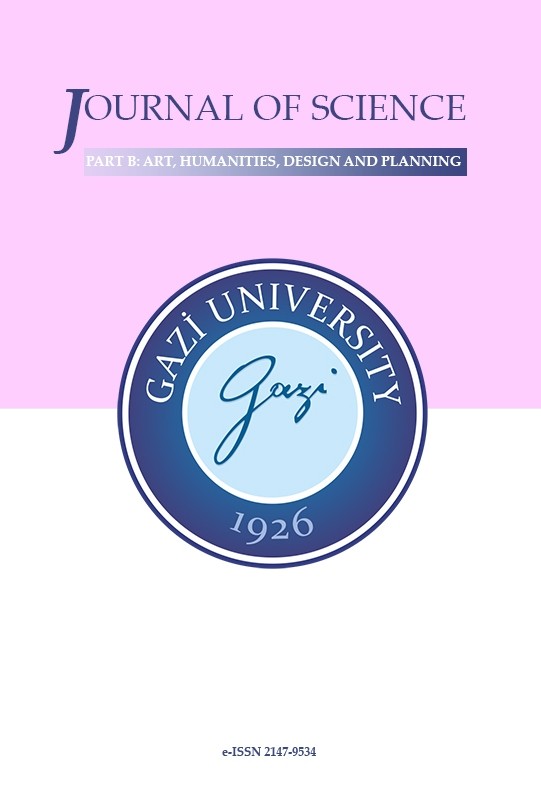Urban Morphology Schools: A Review of the English, Italian, and French Schools of Thought
Urban Morphology Schools: A Review of the English, Italian, and French Schools of Thought
Urban morphology, Urban, Urban form Urban morphology schools,
___
- [1] Whitehand, J. W., and Conzen, M. R. G. (1981). The Urban Landscape: Historical Development and Management. London: Academic Press.
- [2] Moudon, A. V. (1997). Urban Morphology as an Emerging Interdisciplinary Field. Urban Morphology, 3-10.
- [3] Whitehand, J. W. (2007). Conezenian Urban Morphology and Urban Landscapes. Istanbul: Proceedings, 6th Internathional Space Syntax Symposium.
- [4] Mirmoghtadayi, M. (2006). In Farsi: pishnehad raveshi baraye tahlil shakhsiat shahr(Suggest a way to analyze the "personality" of the city). MOHIT SHENASI(39), 129-140.
- [5] Oliveira, V. (2019). J.W.R. Whitehand and the Historico-geographical Approach to Urban Morphology. Springer International Publishing.
- [6] Larkham, P. J. (1998). Urban morphology and typology in the United Kingdom. Cambridge, Massachusetts: Typological Process, Ed. Attilio petruccioli, Agha khan program for islamic architecture.
- [7] Pourmohammadi , M., Sadr mousavi, M., & Jamali, S. (2011).In farsi: Vakavi maktab haye morphology shahri, A Review of Urban Morphology Schools. Arid Regions Geographic Studies, 5(2), 1-16.
- [8] MahmeliAbyaneh, H. (2012). In Farsi: moghayese tatbighi makateb morphology shahri be manzoor takmil an bar asas dastgah tahlili maktab eghtesad siasi faza(Comparative Study on Schools of Urban Morphology Studies in order to Complete Them, Based on Analytical System of Political Economy School(. ARMANSHAHR, 4(7), 159-171.
- [9] Moudon, A. V. (1998). The Changing Morphology of Suburban Neighborhoods. In Typological Process and Design Theory. Attilio Petruccioli (ed). assachusetts: Cambridge, M: Aga Khan Program for Islamic Architecture.
- [10] Ye, Y. (2015). Urban Form Index For Quantitative Urban Morphology And Urban Design Analyses. University of Hong Kong.
- [11] Conzen, M. (1960). Alnwick, Northumberland: a study in town-plan analysis. London: George Philip: Wiley on behalf of The Royal Geographical Society (with the Institute of British Geographers). Retrieved from http://www.jstor.org/stable/621094
- [12] Oliveira, V. (2018). Teaching Urban Morphology (The Urban Book Series) . Springer.
- [13] Xu, Z. (2012). From Alnwick to China: M. R. G. Conzen's classic study in Chinese. Urban Morphology 16(2):149-164.
- [14] Esfanjary, E. (2017). Persian Historic Urban Landscapes: Interpreting and Managing Maibud over 6000 Years. Edinburgh University Press.
- [15] Moudon, Anne Vernez (1994); “Getting to know the built landscape: Typomorphology” In “Ordering Space: Types in architecture and design”, Karen A.Franck and Lynda H. Schneekloth(eds.) New York
- [16] Arat, M. A., Topçu, M. (2023). An Integrated Framework For Assessment Of Urban Forms and Their Transformation. 0. https://doi.org/10.58278/0.2023.8 [17] Ma, F., Li, M. (2022). Spatial-temporal Characteristics Of Urban Expansion In Shenyang From 2001 To 2014. IRSPSD International, 4(10), 161-173. https://doi.org/10.14246/irspsd.10.4_161
- [18] Erin, İ., Araldi, A., Fusco, G., Cubukcu, E. (2017). Quantitative Methods Of Urban Morphology In Urban Design and Environmental Psychology. Proceedings 24th ISUF 2017 - City and Territory in the Globalization Age. https://doi.org/10.4995/isuf2017.2017.5732
- [19] Cortes, P. (2006). Morphological analysis of the contemporary urban territory: Is it still a relevant approach? In Urban Transformations and Sustainability: Progress of Research Issues in Urbanism 2005 (pp. 94-113). Netherlands: IOS press.
- [20] Panerai, P., Castex, J., Depaule, J.-C., & Samuels, I. (2004). Urban forms: The death and life of the urban block. Architectural Press.
- [21] Darin, M. (1998). The study of urban form in France. Urban Morphology, 63-76.
- [22] Samuels, I. (1990) ‘Architectural practice and urban morphology’, in Slater, T. R. (ed.) The built form of Western cities: essays for M. R. G. Conzen on the occasion of his eightieth birthday (Leicester University Press, Leicester) 415-35.
- [23] Carter, H. (1976). The study of urban geography. NEW YORK: Whiley and sons.
- [24] McGlynn, S., & Samuels, I. (2000). The funnel, the sieve and the template: towards an operational urban morphology. URBAN MORPHOLOGY, 4(2), 79-89.
- Yayın Aralığı: Yılda 4 Sayı
- Başlangıç: 2013
- Yayıncı: Gazi Üniversitesi
Considering Industrial Design In The Context Of Communication: The Concept of Design Communication
Lost Tangible Cultural Heritage: A Traditional Tokat House Restoration Project
A Research on Material and Manufacturing Methods Training in Industrial Design
User - Space Relationship in Emergency Departments
ASSESSMENT OF BUILDINGS IN DIFFERENT ERAS OF RIFAT CHADIRJI
Melek KUTLU DİVLELİ, Norwina MOHD NAWAWI, Aida Kesuma AZMIN
A Study on the Applicability of Energy Efficient Design Approaches in Airport Terminal Buildings
Ekrem Bahadır ÇALIŞKAN, Filiz KARAKUŞ
Ayorinde OLUYEMİ, Oluwafemi ADELABU, Professor E.b. Oladumiye OLADUMİYE
Evaluation of the Accessibility of the Disabled in Urban Areas on the Sample of the National Library
EN-SUITE BATHROOM ANALYSIS IN A TRADITIONAL TURKISH HOUSE: YALVAÇ HOUSE AND GUSÜLHANE
